Olaf A. Hougen Symposium, 2004-2005
ENGINEERING BIOLOGY FROM MOLECULES TO ORGANISMS
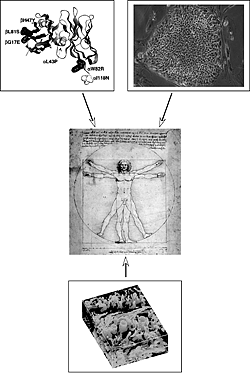 Single chain T-cell receptor engineered for enhanced stability; human embryonic stem cell colony; and a three-dimensional visualization of a vascularized tissue engineering construct (courtesy of Larry McIntire)
Single chain T-cell receptor engineered for enhanced stability; human embryonic stem cell colony; and a three-dimensional visualization of a vascularized tissue engineering construct (courtesy of Larry McIntire)
Engineering approaches have recently moved to the forefront of biology and medicine, and have made a tremendous impact through the elucidation of basic mechanistic phenomena. A thorough understanding of molecular mechanisms can translate into improved design of protein therapeutics, biocatalysts, cell-based therapies, and bio-inspired matrices. Integration of molecular and cellular design principles also affords the ability to rationally design complex biomimetic assemblies, in turn leading to more efficacious clinical treatments. In the second Olaf A. Hougen Symposium, leading researchers at the interface of engineering and biology will highlight pioneering studies that illustrate the path leading from basic sciences to the clinic.
Schedule of Events
Tuesday, Febraury 1, 2005 Public lectures in Room 1610 Engineering Hall |
|
| 9:00 a.m. | George Georgiou Discovery of Novel Therapeutic Antibodies and Enzymes |
| 9:40 a.m. | David A. Tirrell Novel Protein Chemistries |
| 10:20 a.m. | Break |
| 10:50 a.m. | Larry V. McIntire Microarray Analysis of Mechanically Induced Gene Expression in Vascular Cells: Implications for Tissue Engineered Arteries |
| 11:30 a.m. | George Q. Daley Stem Cells in Regenerative Medicine and Reproductive Biology |
| 12:10 p.m. | Lunch |
| 1:10 p.m. | David J. Mooney Tissue Engineering Using Cell Instructive Materials |
| 1:50 p.m. | Eric V. Shusta (UW-Madison) Noninvasive Drug Delivery across the Blood-Brain Barrier via Antibody Targeting |
| 2:10 p.m. | Sean P. Palecek (UW-Madison) Strategies to Enhance Human Embryonic Stem Cell Growth and Preservation |
Invited Speakers
 |
George Q. Daley is associate professor of Biological Chemistry and Molecular Pharmacology at Harvard Medical School and a staff physician at Children's Hospital Division of Hematology/Oncology. Dr. Daley's laboratory studies stem cell development and differentiation, emphasizing derivation of functional hematopoietic and germ cell elements from embryonic stem cells, and the genetic mechanisms that predispose to malignancy. His many awards include the Burroughs-Wellcome Fund Career Award in the Biomedical Sciences, the Leukemia and Lymphoma Society of America Stohlman Scholar Award, and the first National Institutes of Health Director's Pioneer Award.
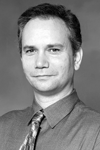 |
George Georgiou is the Joan and Keys Cury/Cullen Trust Professor of Chemical Engineering and Biomedical Engineering, and a member of the Institute for Cell and Molecular Biology at the University of Texas, Austin. His research in molecular biotechnology focuses on the development of technologies for protein engineering, the engineering of high affinity therapeutic antibodies for infectious agents and the discovery of new enzymes. His recent honors include the ACS Biochemical Technology Award and the AICHE Professional Progress Award for Outstanding Progress in Chemical Engineering, both in 2003, as well as election in 2004 to the American Association for the Advancement of Science.
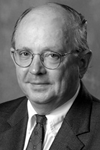 |
Larry V. McIntire is the Wallace H. Coulter Professor and Chair of the Coulter Department of Biomedical Engineering at Georgia Institute of Technology and Emory University. His research interests include the effects of flow on mammalian-cell metabolism, molecular mechanisms of cell adhesion, tissue and cellular engineering, and bioengineering aspects of vascular biology. Among his many distinctions, Dr. McIntire was elected a Fellow of the American Association for the Advancement of Science in 1998, and was elected to the National Academy of Engineering in 2001. Dr. McIntire is also the 2003 recipient of the Biomedical Engineering Society Distinguished Service Award and Presidential Award.
 |
David J. Mooney, whose many distinctions include a 1987 B.S. in chemical engineering from UW-Madison, is now the Gordon McKay Professor of Bioengineering at Harvard University. His research is aimed at developing approaches to synthesis of polymers that drive regeneration of tissues and organs, including transplanting cells, delivering proteins that make cells already in the body form new tissues, using gene therapy to grow tissues, and using biomaterials to drive regeneration. Dr. Mooney has won a number of scientific and engineering awards, serves on the editorial boards of several journals, and the patents arising from his research have been licensed to a number of biotechnology companies for development.
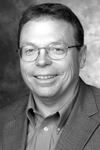 |
David A. Tirrell is the Ross McCollum-William H. Corcoran Professor and Chair of the Division of Chemistry and Chemical Engineering at the California Institute of Technology. His research combines organic, biological, and materials chemistry to make new polymeric systems of controlled molecular and supramolecular architectures, including artificial proteins made by expression of artificial genes in microbial cells, and flexible polymeric nanowires and nanotubes made by a membrane templating approach. His awards and honors are many, including the Chancellor's Medal of the University of Massachusetts, Massachusetts, and the degree of Doctor honoris causa from the Technical University of Eindhoven.
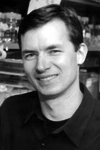 |
Sean P. Palecek is assistant professor of chemical and biological engineering, is affiliated with the Department of Biomedical Engineering, and is a member of the Comprehensive Cancer Center at the University of Wisconsin-Madison. His research is aimed at developing models for how information flows in a cell, how the cell translates this information into chemical signals, and how these signals manifest in physical responses such as changes in cell morphology, adhesion, invasion through tissues, or cell differentiation. His work has been recognized through a Lilly Young Faculty Award in Biosystems Engineering and an NSF CAREER Award.
 |
Eric V. Shusta is assistant professor of chemical and biological engineering and is affiliated with the Department of Biomedical Engineering at the University of Wisconsin-Madison. His current research is focused on the development of non-invasive delivery methods using endogenous transport mechanisms present at the blood-brain barrier as a means to shuttle drug cargo to the brain for the treatment of neurological diseases. He is also working to develop an in vitro model of the blood-brain barrier that accurately mimics the in vivo characteristics of the blood-brain barrier to permit the combinatorial screening of drug candidates and drug-targeting strategies. His awards include a Camille and Henry Dreyfus New Faculty Award and an NSF CAREER Award.
Symposium Abstracts
George Georgiou
Department of Chemical Engineering, Biomedical Engineering Program, and Institute for Cell and Molecular Biology
University of Texas at Austin
Discovery of Novel Therapeutic Antibodies and Enzymes
One of the long-term interests of our group is the engineering of proteins for pharmaceutical and biotechnology applications. In addition to its practical significance, the creation of novel proteins provides unique insights into the mechanisms of protein:ligand recognition and enzymatic catalysis. Specifically, we are engaged in research aimed at: (i) the development of enabling technologies that facilitate protein discovery; (ii) the engineering of therapeutic antibodies for fighting infectious diseases; (iii) the creation of novel enzymes, in particular highly specific hydrolytic catalysts and also "humanized" enzymes suitable for therapeutic applications; and finally (iii) the fundamental understanding of the molecular basis that accounts for the functional properties of the novel proteins we discover.
Three specific applications of our work will be described in some detail:
a.Development of therapeutic antibodies for anthrax.
b.Engineering of proteases exhibiting exquisite substrate selectivity.
c.The combinatorial creation of chimeric enzymes, via non-homologous recombination, as a means for the creation of "humanized" enzymes that minimize immune responses in humans.
David A. Tirrell
Division of Chemistry and Chemical Engineering
California Institute of Technology
Novel Protein Chemistries
Although proteins exhibit a wide range of interesting and useful properties, the normal amino acids provide a limited set of starting points for protein synthesis, analysis and design. By engineering the aminoacyl-tRNA synthetases of bacterial cells, we and others have been able to introduce dozens of new amino acids into recombinant proteins, and to exploit those amino acids to prepare proteins and protein-like macromolecules with novel properties. New methods of encoding amino acids have also been developed, and applications of non-standard amino acids in protein science and cell biology are being explored.
Larry V. McIntire
The Wallace H. Coulter Department of Biomedical Engineering
Emory and Georgia Institute of Technology
Microarray Analysis of Mechanically Induced Gene Expression in Vascular Cells: Implications for Tissue Engineered Arteries
Gene microarray analysis is a powerful method for determining the effect of biological stimuli on gene expression profiles. We used Agilent arrays, which contain over 40,000 human gene sequences, to identify those regulated by fluid shear stress exposure. Message levels of genes in primary human umbilical vein endothelial cells exposed to a pulsatile carotid arterial shear stress profile for 6 or 24 hours were compared with message levels in cells exposed to steady flow at the same mean shear stress and to those ECs grown under static conditions. For several of the genes, Northern analysis and qRTPCR were used to confirm the results. The microarray analysis identified many shear stress regulated genes, including genes that have been previously shown to be regulated by shear stress such as endothelin-1, monocyte chemotactic protein-1 and prostaglandin transporter. Overall the expression of several hundred increased or decreased two fold or greater. The use of microarray technology to study the biological effects of shear stress and cyclic strain has the potential to expedite our understanding of the role of shear stress and cyclic strain in vascular biology and to allow the development of new hypotheses concerning genetic networks and gene clusters regulated by mechanical forces. This knowledge will be crucial if truly functional tissue engineered arteries are to be made in the near future. Mechanical forces are a major determinant of endothelial cell phenotype.
George Q. Daley
Division of Pediatric Hematology/Oncology
The Children's Hospital, and
Department of Biological Chemistry and Molecular Pharmacology
Harvard Medical School
Stem Cells in Regenerative Medicine and Reproductive Biology
Differentiation of embryonic stem (ES) cells in vitro yields abundant hematopoietic progenitors, but achieving stable hematopoietic engraftment of irradiated mice has proven difficult. This has been attributed to the likelihood that ES cell differentiation recapitulates the earliest yolk sac stages of hematopoietic development, when progenitors have limited developmental potential and fail to productively engraft adults. In an effort to characterize factors that promote formation of definitive Hematopoietic Stem Cells (HSCs), we have shown that activation of a genetic pathway involving the homeodomain proteins cdx4 and hoxb4 promotes the differentiation of blood progenitors that engraft stable lymphoid-myeloid hematopoiesis in irradiated mice. The cells provide radioprotection, reconstitute B220/CD19 and B220/IgM positive B lymphoid populations in spleen and lymph nodes, CD3/CD4 and CD3/CD8 positive T cells in spleen and CD4/CD8 double positive T cells in the thymus, and can be transplanted from primary into secondary mice. Southern hybridization of purified populations of myeloid and lymphoid lineages shows multiple common retroviral integration sites, thereby demonstrating the derivation of hematopoietic stem cells from ES cells. We are currently testing whether engraftable HSCs derive directly from primitive progenitors whose fate has been altered by genetic modification, or represent in vitro expansion of rare definitive progenitors. We have used hoxb4 modification of ES-derived HSCs to enable therapeutic transplantation with products of ES cells, including a proof-of-principle application of therapeutic cloning to treat an immunodeficient Rag2-/- mouse, and efforts are underway in murine models of additional genetic disorders of the bone marrow. Our studies in the blood forming system are aimed at establishing principles applicable to generating engraftable HSCs from human ES cells. We are also pursuing the differentiation of germ cells from ES cells to facilitate studies of somatic cell reprogramming.
David J. Mooney
Biomedical Sciences and Engineering Program
Harvard University
Tissue Engineering using Cell Instructive Materials
Tissue engineering and regeneration is providing new approaches to treat the loss or deficient function of tissues and organs. However, it will be critical to regulate the cellular populations participating in these processes in order to create functional tissue replacements. Our laboratory is developing synthetic mimics to the extracellular matrix that are capable of actively regulating cellular phenotype. These materials exploit known signal transduction pathways via presentation of specific receptor-binding ligands, and mechanical information via the physical bridge formed by the receptor-ligand bonds. Past approaches focused on delivery of single stimuli to cell populations from materials, but current efforts more closely mimic developmental processes by the delivery of multiple cues in spatially and temporally regulated fashions.
Eric V. Shusta
Department of Chemical and Biological Engineering
UW-Madison
Noninvasive Drug Delivery across the Blood-Brain Barrier via Antibody Targeting
Drug delivery to the brain is hindered by the presence of the blood-brain barrier (BBB). The BBB is made up of a unique class of endothelial cells that render the blood vessels of the brain impermeable to most small molecule pharmaceuticals as well as to gene and protein medicines. In order to overcome this significant obstacle, cellular transport systems can be exploited for non-invasive drug delivery strategies. A targeting moiety consisting of an antibody binding subunit can be covalently attached to a protein therapeutic. This fusion can then act as a molecular Trojan horse and gain entry into the brain by functioning as an artificial substrate for the cellular transport system. Production of such fusion proteins is a challenging problem given that the targeting and therapeutic portions of the fusion are processed differently by biosynthetic production machinery. To this end, we have used yeast to express a therapeutic fusion protein consisting of a brain-targeting module (OX26 single-chain antibody, scFv) and a therapeutic module (brain derived neurotrophic factor, BDNF). Expression levels of the brain-targeted scFv-BDNF fusion were maximized by manipulation of expression temperature, cellular folding environment, and gene dosage. In addition, a paucity of known molecular transport systems capable of blood-to-brain drug delivery limits the efficacy of brain-specific delivery strategies. To overcome this obstacle we are developing combinatorial strategies for the identification of novel cellular transport systems. Libraries of scFv expressed on the surface of yeast can be used to probe the surface protein composition of intact mammalian cells. In this way, it is possible for concomitant identification of potential membrane transporters and antibody-targeting scFv reagents via yeast cell-mammalian cell conjugates without a priori knowledge of either protein's identity. We have recently completed proof-of-concept experiments illustrating the feasibility of such an approach. In combination, these two research thrusts have the potential to make significant contributions to the solution of the brain drug delivery problem.
Sean P. Palecek
Department of Chemical and Biological Engineering
UW-Madison
Strategies to Enhance Human Embryonic Stem Cell Growth and Preservation
Human embryonic stem cells (hESCs) hold tremendous therapeutic potential due to their unique capacity for unlimited self-renewal and their pluripotency. However, the use of hESCs in research and clinical settings is impeded by difficulties in growing and preserving these cells. Less than 0.1% of cells survive standard cryopreservation methods, resulting in long delays to generate sufficient quantities of cells from frozen stocks. Also, cell growth is laborious since hESCs grow slowly at a low density to inhibit spontaneous differentiation. We have devised novel methods that enhance cell survival during cryopreservation and inhibit spontaneous differentiation in hESC cultures.
We have determined that the majority of cell death during cryopreservation is a result of apoptosis, programmed cell death. Standard cryopreservation methods dissociate hESC colonies from extracellular matrix (ECM) and suspend the cells in a cryoprotectant formulation. By maintaining cell-extracellular matrix contacts intact during the cryopreservation process, we are able to inhibit apoptosis and increase the survival of hESCs by two orders of magnitude, as compared to preservation of cells in suspension. Preserving cells embedded in ECM is superior to freezing them attached to a monolayer and growing the cells embedded in ECM for 24-48 hours prior to freezing enhances cell recovery. In addition to enhancing cell viability, this freezing configuration almost completely inhibits cell differentiation.
We will also present a method to inhibit spontaneous differentiation of hESCs in culture by application of mechanical forces. Above a certain threshold, cyclic mechanical strain maintains hESCs in self-renewing state. The mechanical signals appear to be directly transmitted to the cells and temporal presentation of strain affects cellular response. Strain does not affect cell growth rate and cells exposed to strain retain the capability to generate tissues derived from the three embryonic germ layers. Application of strain appears to be a valuable tool for increasing cell density during hESC culture.
